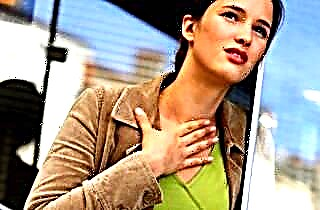Catarrhal otitis media is an inflammation of the middle ear, which involves the sections of the mastoid process, the tympanic cavity and the Eustachian tube. An infectious disease is provoked mainly by bacteria, in particular streptococci, pneumococci, Pseudomonas aeruginosa, etc. The development of ear pathology is facilitated by a decrease in the body's immune forces, which occurs as a result of hypothermia, vitamin deficiency, chronic diseases or endocrine disorders.
Causes

Otitis media in 95% of cases is a post-infectious or post-traumatic complication. As a rule, pathogenic fungi, microbes or viruses act as provocateurs of catarrhal processes in the tissues of the organ of hearing. They often enter the ear cavity through the Eustachian tube or through the hematogenous route, provoking inflammation and tissue edema.
ENT pathology is often the result of ineffective treatment of infectious diseases such as:
- sinusitis;
- pharyngitis;
- tonsillitis;
- meningitis;
- flu;
- adenoiditis;
- sinusitis;
- rhinitis.
Much less often, inflammation occurs as a result of a decrease in general immunity, provoked by hypothermia, allergies, vitamin deficiency, irrational intake of antibacterial agents, etc. In such cases, opportunistic microorganisms begin to develop actively, which leads to tissue intoxication, inflammation and edema.
Otitis media in children
Catarrhal otitis media - what is it? The disease belongs to one of the most common ear pathologies, characterized by acute inflammation of the mucous membranes of the Eustachian tube, mastoid, and tympanic cavity. If the disease is not diagnosed in time, within 3-4 days, not serous, but purulent exudate will begin to stand out from the ear canal.
Children are susceptible to the disease, which is due to the anatomical features of the structure of the Eustachian tube. It is much wider and shorter than that of adults. That is why infectious pathogens freely enter the ear cavity from the nasopharynx through the auditory canal. In addition, the mucous membranes lining the surface of the tympanic cavity are loose in children under one year old. This facilitates the rapid penetration of pathogens into tissues.
The factors that trigger the onset of the disease in children include:
- weakened immunity;
- avitaminosis;
- tendency to allergies;
- regular regurgitation;
- horizontal position.
Pediatricians warn that the baby should not be laid down immediately after breastfeeding. Due to frequent regurgitation, food debris can pass from the mouth into the Eustachian tube and provoke inflammation. That is why doctors recommend that after feeding the baby, hold it in a "column" until the air leaves the digestive system.
More than 40% of infants suffer from otitis media, which is associated with reduced immunity reactivity and structural features of the hearing aid.
Symptomatic picture
In case of development of catarrhal otitis media, foci of inflammation are localized in the interval between the tympanic membrane and the ear labyrinth. The presence of pathology is signaled by uncomfortable sensations in the ear, which intensify over time, turning into shooting pains. The main symptoms of catarrhal otitis media include:
- feeling of congestion;
- periodic noises;
- throbbing pain;
- hearing impairment;
- release of serous exudate;
- increased pain on palpation of the tragus.
As inflammation progresses, pain radiates to the temporal region, teeth, bridge of the nose, etc. The discomfort is exacerbated by sneezing and barking coughs.
With catarrhal otitis media in children, crying that occurs during breastfeeding will become a symptom of the disease. The inflammatory process in the Eustachian tube provokes tissue edema, as a result of which the ventilation of the tympanic cavity worsens. This becomes the main cause of the difference between external and internal pressure on the eardrum, which increases during sucking.
If the inflammation is caused by a bacterial infection, the patient may have a fever up to 39 degrees. With untimely treatment, liquid exudate that accumulates in the ear cavity quickly thickens and turns into pus.
Its spread is fraught with complications, in particular the formation of adhesions on the ossicles or the tympanic membrane.
Conservative therapy
In most cases, the treatment of catarrhal otitis media is limited to the use of physiotherapy and pharmacotherapy. In this case, the choice of a suitable medication is due to the age of the patient and the prevalence of foci of inflammation. To eliminate infection, i.e. causes of inflammation, use medications of systemic action, such as antibiotics, antiviral agents, etc.
To stop the general and local manifestations of ENT pathology, external drugs are used. For the treatment of otitis media, ear drops and ointments are often used, which have a pronounced analgesic, decongestant and regenerating effect. An integrated approach to resolving the issue provides a quick regression of catarrhal processes and, accordingly, recovery.
Important! In the event of purulent or bloody discharge from the ear, you cannot use ear drops as part of local therapy. If you find such symptoms, you should consult a specialist.
Pediatric therapy
It should be noted that the treatment of catarrhal otitis media in children is somewhat different from the standard treatment regimen for adults. This is especially true for the use of antibacterial drugs and antipyretics. The use of drugs with potent components entails the development of an allergic reaction, secondary immunodeficiency and aplastic anemia.
In the framework of pediatric antibiotic therapy, preference is given to antibiotics of the penicillin series. In case of their ineffectiveness, macrolides and drugs of the cephalosporin series are used. Of all types of antimicrobial agents, they are less toxic, therefore they do not lead to sensitization, dysfunction of the detoxification organs and toxic poisoning of the body.
Direct indications for the use of antibiotics in the treatment of otitis media in children are:
- purulent discharge from the ears;
- heat;
- ineffectiveness of antiviral agents.
Important! It is undesirable to use antibacterial drugs in pediatric therapy for the treatment of patients under the age of two.
Drug therapy
To prevent the formation of purulent masses inside the ear cavity, treatment of catarrhal otitis media in adults should be started when the first signs of the disease are detected. To eliminate the pathogenic flora and associated symptoms, the following types of drugs are used:
- vasoconstrictor nasal drops ("Sanorin", Galazolin ") - eliminate the swelling of the mucous membranes by reducing vascular permeability;

- antibiotics ("Amoxiclav", "Collargol") - kill pathogenic bacteria, which leads to detoxification of the body and relieve symptoms;
- glucocorticosteroids (Decadron, Esacinon) - relieve inflammation, thereby eliminating tissue edema and normalizing the drainage function of the Eustachian tube;
- ear drops (Otipax, Polydexa) - relieve pain and prevent the spread of inflammation foci to adjacent tissues;
- thermal procedures (blue lamp, heating pad) - stimulate the production of lymphocytes, which leads to an increase in local immunity;
- antipyretics (Nurofen, Paracetamol) - reduce high body temperature, thereby eliminating the symptoms of general malaise.
In the process of treating catarrhal otitis media in children, the following drugs should not be used:
- semi-alcohol compresses;
- wax suppositories;
- alcohol drops.
The use of drugs based on boric alcohol and chloramphenicol leads to disturbances in the work of hearing analyzers and spatial orientation, which is fraught with deafness and impaired coordination of movements.




